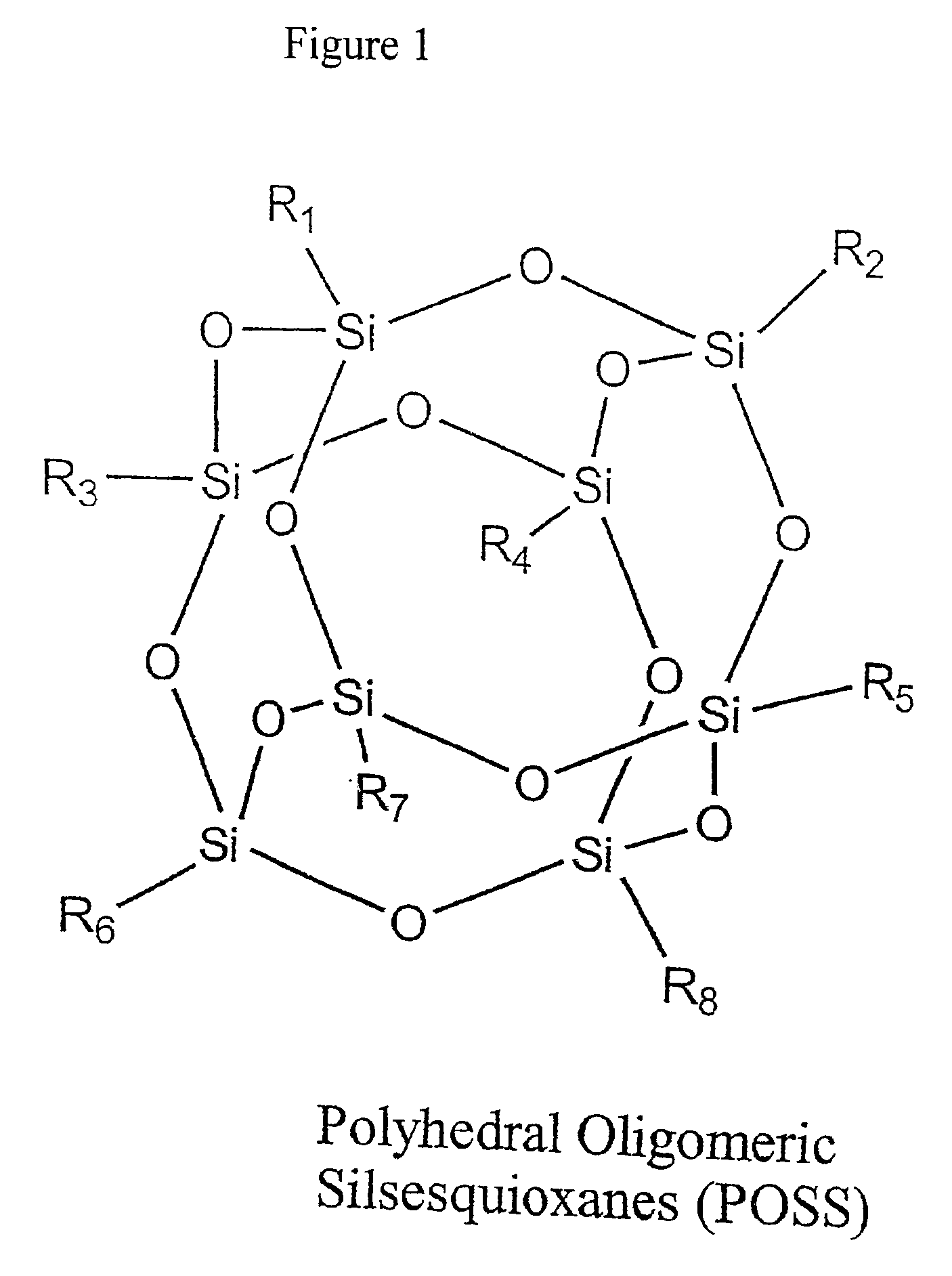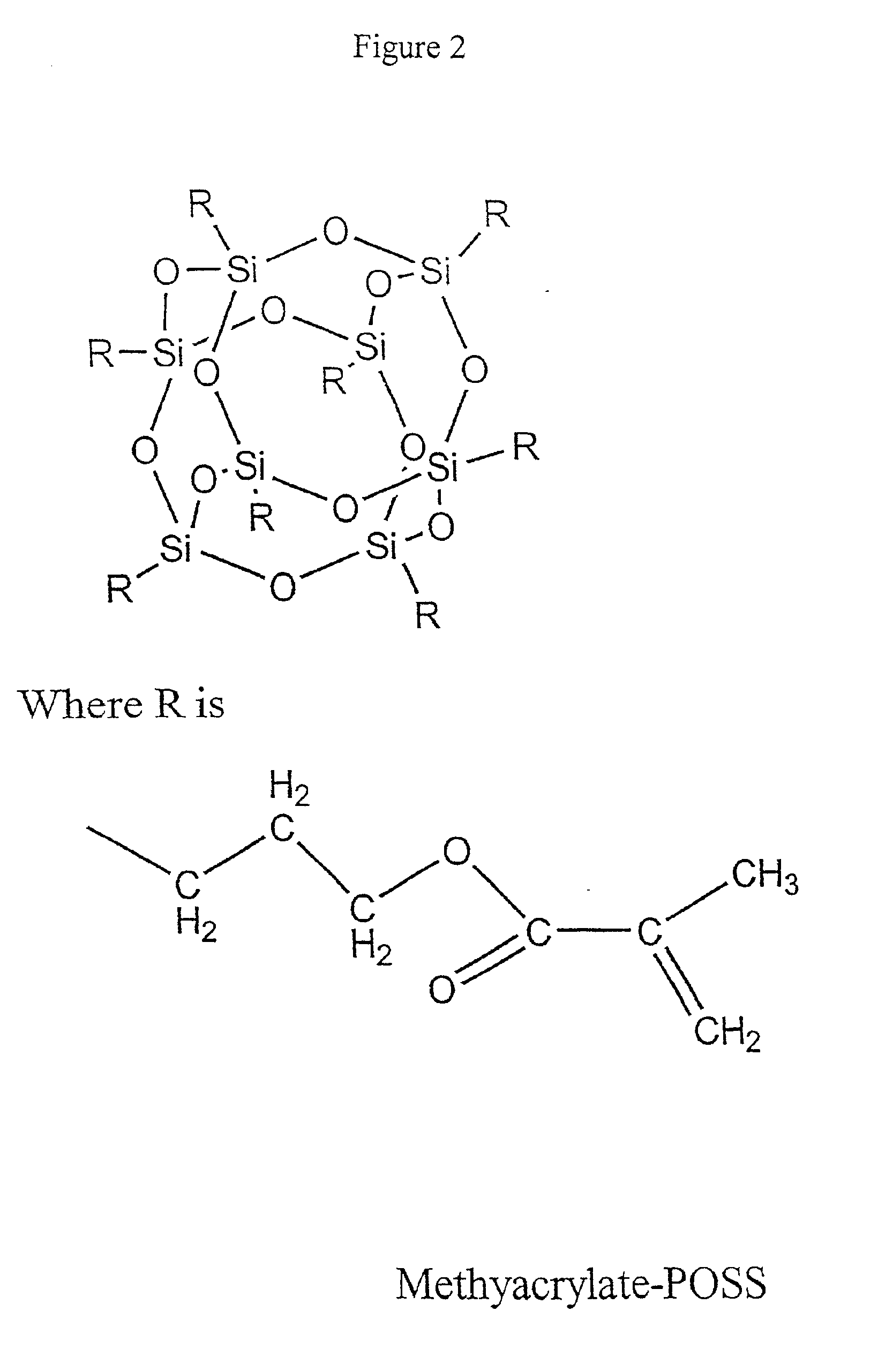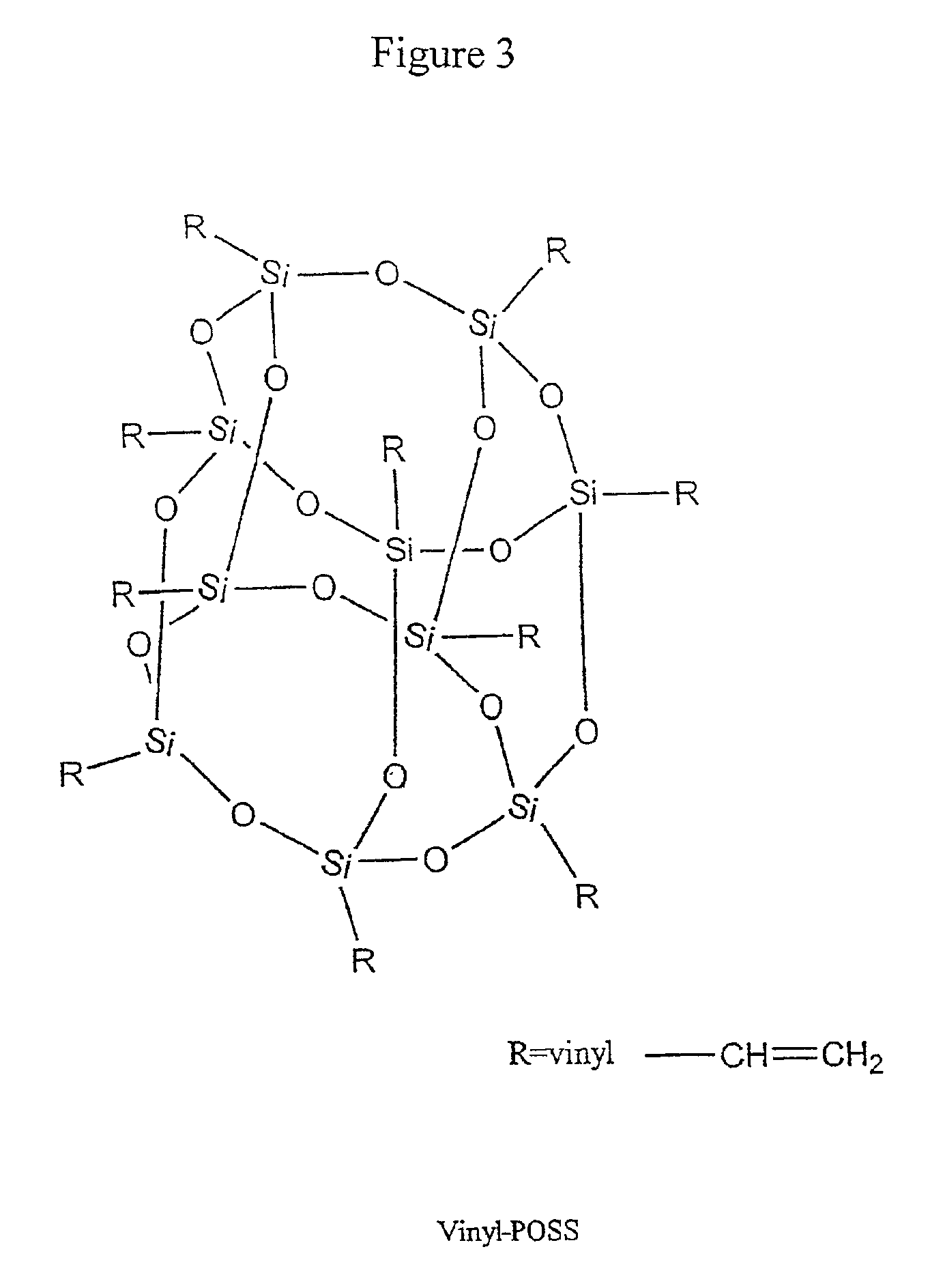Inhomogeneous materials having physical properties decoupled from desired functions
a technology of physical properties and homogeneous materials, applied in the field of homogeneous materials, can solve the problems of insufficient thermal and mechanical stability of k materials, power dissipation, and insufficient future circuits
- Summary
- Abstract
- Description
- Claims
- Application Information
AI Technical Summary
Benefits of technology
Problems solved by technology
Method used
Image
Examples
example 1
A colloidal suspension of silicalite crystals (having average diameters of about 300 Å to about 400 Å) in 1-propanol was prepared. The 8-fold substituted methacrylate-POSS discussed above was added to the colloidal suspension to a concentration of about 7.3 milligrams / milliliter (mg / ml). The mixture of silicalite and methacrylate-POSS was sonicated for about three hours (in a series of ½ hour periods to avoid generating too much heat during ultrasonication) and kept overnight to generate a smooth premix, and then filtered through a one micron filter.
A double coating (two 3 ml aliquots) of the filtered colloidal suspension was spin coated onto each of several silicon substrates at about 800 RPM using a conventional spin coating apparatus to form films having a thickness of about 1300 (Å). The resulting films were baked for about 1 minute at about 80° C. to about 110° C. to remove the solvent. The substrates were then placed in a pressure chamber, and a portion of the film on each sub...
example 2
The silicalite / methacrylate-POSS mixture of Example 1 was spin coated onto a substrate as described in Example 1. The resulting film was baked for about 1 minute at about 60° C. (soft bake) to remove the solvent and then cured twice with 248 nm ultraviolet as described in Example 1, except that in this example the laser pulse energy was about 315 mJ. The ultraviolet cured film was spin washed with propanol, spun dry, and then thermally cured at about 400° C. for about 10 minutes to drive off remaining solvent. The spin washing removed 80-90% of the uncured film. The washed film was exposed to about 1 atmosphere of hexamethyldisilazane (HMDS) vapor at room temperature for about 10 minutes, and then baked at about 200° C. in ambient atmosphere for about 2 minutes to drive off excess HMDS. The resulting cured film had a thickness of about 1040 Angstroms and a dielectric constant of about 2.66.
example 3
The silicalite / methacrylate-POSS of Example 1 was added to the silicalite colloidal suspension of Example 1 to a concentration of about 5.2 mg / ml to form a mixture otherwise similar to that of Example 1. This mixture was spin coated onto a substrate and processed as described in Example 2, except that it was cured with ultraviolet radiation only once and there was no soft bake step prior to ultraviolet curing. Spin washing removed 80-90% of the uncured film. The resulting cured film had a thickness of about 1490 Angstroms and a dielectric constant of about 2.5.
PUM
| Property | Measurement | Unit |
|---|---|---|
| dielectric constant | aaaaa | aaaaa |
| dielectric constant | aaaaa | aaaaa |
| dielectric constants | aaaaa | aaaaa |
Abstract
Description
Claims
Application Information
 Login to View More
Login to View More - R&D
- Intellectual Property
- Life Sciences
- Materials
- Tech Scout
- Unparalleled Data Quality
- Higher Quality Content
- 60% Fewer Hallucinations
Browse by: Latest US Patents, China's latest patents, Technical Efficacy Thesaurus, Application Domain, Technology Topic, Popular Technical Reports.
© 2025 PatSnap. All rights reserved.Legal|Privacy policy|Modern Slavery Act Transparency Statement|Sitemap|About US| Contact US: help@patsnap.com



